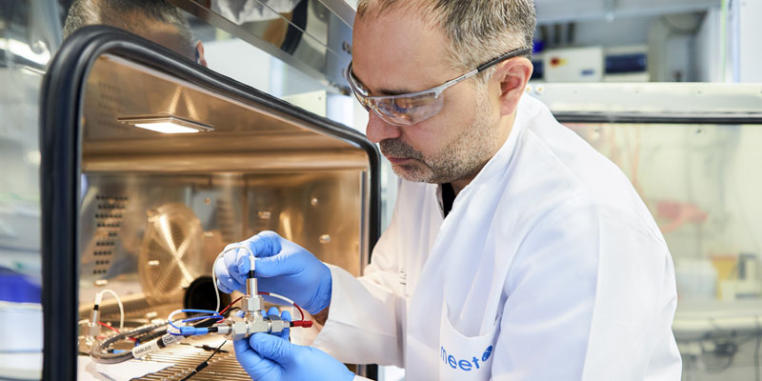Battery Aging
The requirements relating to the lifetime of a battery are rising all the time, especially as a result of its increasing use in electromobility or as a stationary storage system. This is why the MEET researchers concentrate on understanding a battery’s aging mechanisms and on developing measures to counteract this aging process. In this way, not only the lifetime increases, but also the costs and the carbon footprint of a battery are spread over a longer period of time. Many different factors influence the aging process and, associated with it, the decline in the battery’s performance and energy. Not only the time factor has a decisive influence on a cell’s lifetime, but so do parameters such as usage, charging or temperatures.
Detailed Research for long-life Batteries

Depending on how great the influence of these factors is, the result is a multitude of reactions in the battery which reduce its lifetime. The MEET researchers aim to develop methods which first of all reveal the aging mechanisms and then quantify them. Our researchers allow batteries to age, under controlled conditions, and by doing so they identify the effects which, for example, the unwanted growth of the solid electrolyte interphase (SEI) and of the cathode electrolyte interphase (CEI), the dissolution of transition metal, a loss of contact in the active material, or lithium plating have on the lifetime of the battery. In the case of lithium plating, metallic lithium is formed while the battery is being charged, and this lithium is deposited in the battery cell, which negatively impacts on the lifetime. Our researchers in this competence area are therefore researching into rapid charging behavior in which no lithium plating occurs. The team has already successfully studied how capacity and internal resistance in graphite cells change under different cyclization conditions.
Overall, the MEET research team does not analyze the aging mechanisms separately, but always in relation to others – because it is often the case that effects and mechanisms overlap. Besides the controlled ageing of batteries, the team therefore also carried out comprehensive post mortem analyses. A further challenge which we face is the complexity of the samples, which often pushes usual methods to their limits. The development and adaptation of methods is therefore an important field of work for our researchers.

